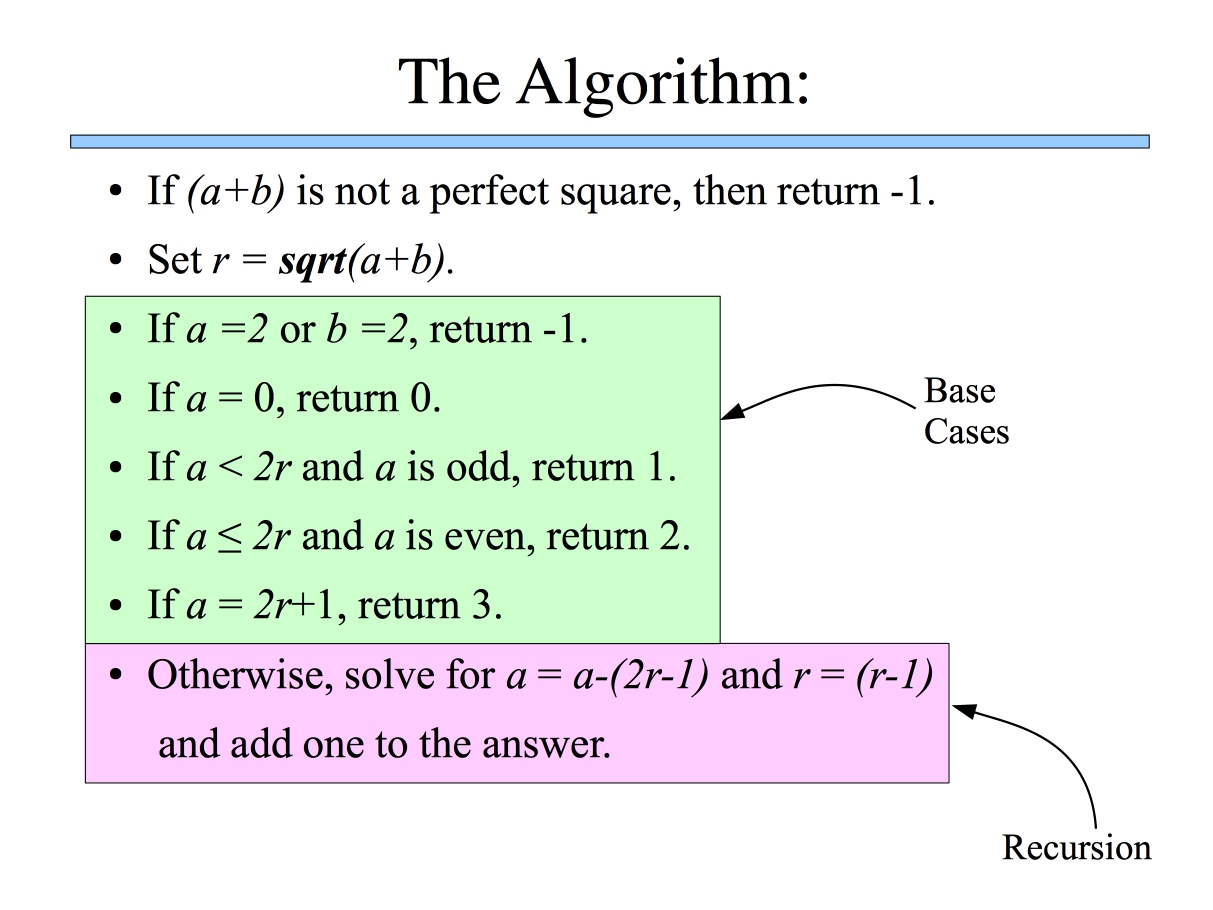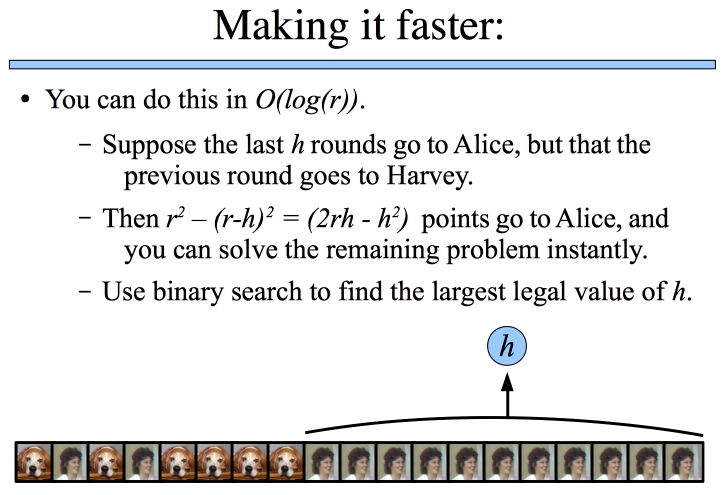 |
I think that this is a much harder talk than the ChristmasTreeDecoration problem. The reason is because the ChristmasTreeDecoration problem fits very nicely into graph algorithms that we teach in CS302 (DFS, Disjoint Sets, Minimum Spanning Tree). The AliceGame problem is one where you have to figure out the insight to solve it using recursion, as I did, or simply using math.
I have some criticisms of my own slides. My very first slide has a lot of information. Probably too much. This is a slide that, when you're presenting it, have what you're going to say ready in your head. If you default to reading the slide's bullets, it's going to come off poorly.
 |
Slide 5 has too much math, and when I deliver it, I don't go through the math, but just have the listener trust me that it's correct. Be wary of too much math -- presenting it rarely goes well.
 |
Similarly, in Slide 10, I present the recursion as an equation. I don't say the equation in my talk, but instead say what it means: "To solve the general problem with a and r, you solve the subproblem of a minus 2r-1, and r-1."
 |
In slide 15, I summarize the algorithm. I think it's important, because it does take many steps, and it's good to summarize the steps. When I present this, I go through each step, and perhaps why. You'll note that the coloring of the base cases and recursion help to organize the bullets and declutter the slide.
 |
My old "Making it faster" slide was way too wordy and math-y:
 |
So, I changed it so that I could talk through it in a more intuitive manner. There's less on this slide, and you can't use it as reference material to get the correct answer as you could with the previous slide, but I think it is easier to present:
 |